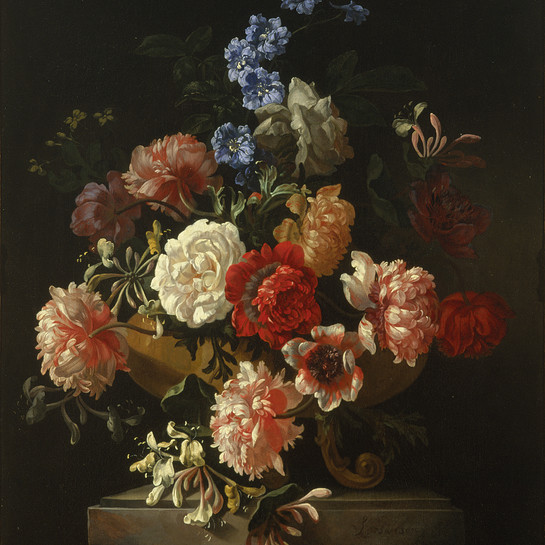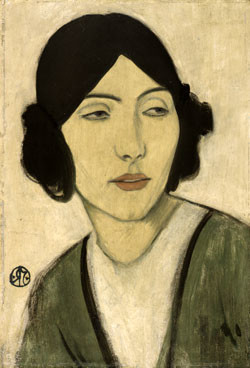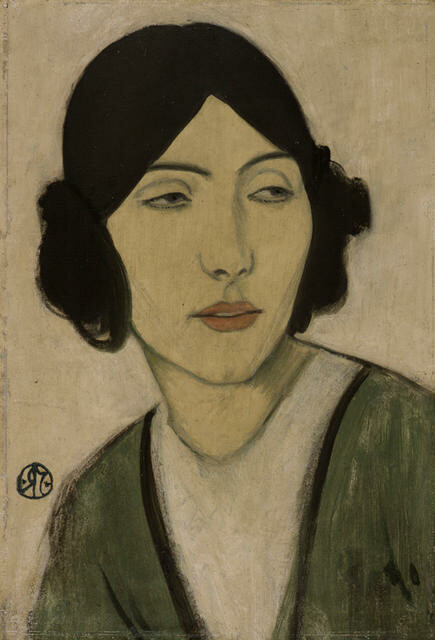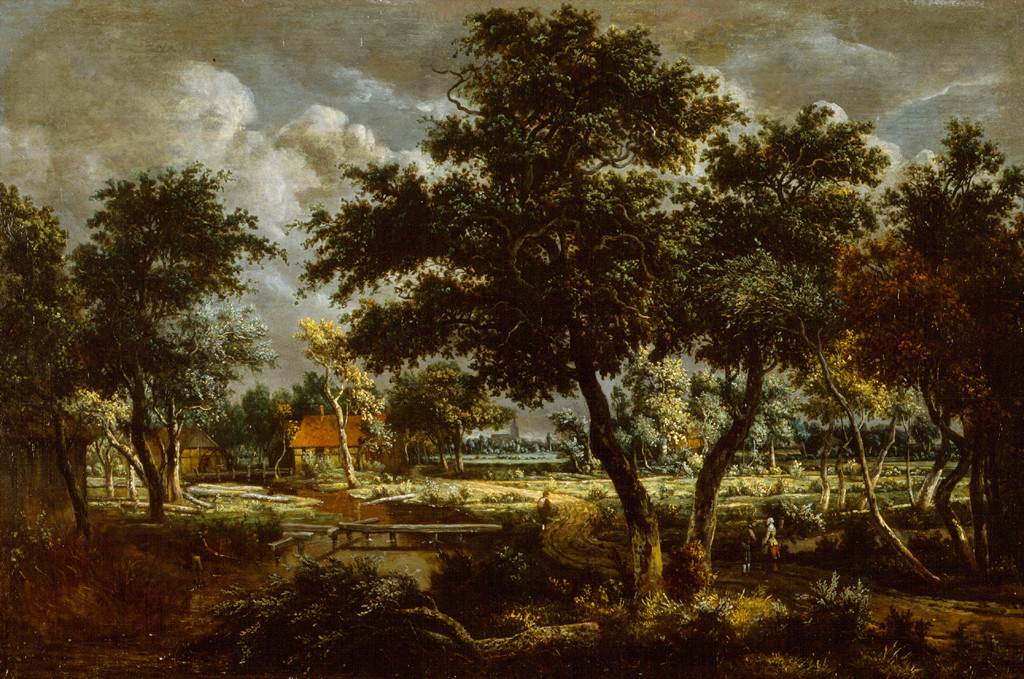Raymond McIntyre
Aotearoa New Zealand, b.1879, d.1933
Ruth
- c. 1913
- Oil on wood panel
- Presented by the McIntyre Family through Miss F. M. McIntyre, 1938
- 380 x 295mm
- 69/96
Tags: actors (performing artists), hair, monograms, people (agents), performing artists, portraits, women (female humans)
In 1911, two years after arriving in London, Raymond McIntyre began his long association with the Goupil Gallery, the city’s leading international contemporary art dealer, and exhibited for the first time with the prestigious New English Art Club. McIntyre built his reputation on small, pared-back landscapes and stylised heads depicting young women. The influence of Japanese woodblock prints is evident, as is the work of William Nicholson, from whom he briefly took lessons. McIntyre became an established figure in London art circles, thanks also to his role as art critic for the Architectural Review.
(The Moon and the Manor House, 12 November 2021 – 1 May 2022)
Exhibition History
Treasury: A Generous Legacy, 18 December 2015 – 27 November 2016
Arriving in London in 1909, the Christchurch-born and trained Raymond McIntyre soon gained a reputation there for his small, pared-back landscapes and studies of female heads, painted in an elegant, simplified, Japanese woodblock inspired style. This painting was modelled on an actor and dancer who became his principal muse from 1912, sometimes mentioned in his letters home: “The girl who is sitting for me a lot now, Sylvia Constance Cavendish… has a very refined interesting pale face… I have done some very good work from her… she is quite a find.”
McIntyre died in London in 1933. Seven of his works were given by his family between 1938 and 1991.
(Treasury: A Generous Legacy, 18 December 2015 – 27 November 2016)
Ruth is one of a series of woman's heads painted in the period just prior to World War One. Strongly influenced by the works of Whistler and Toulouse Lautrec, whose works he would have seen during a visit to France and by the Japanese woodblock print, this painting has a rigorous design. The model's features are modified and the forms reduced to an elegant simplicity. The sitter was probably a young actress, Phyllis Cavendish, who was his favourite model at this time and who was persuaded to coil her long hair on either side of her face like the Breton women McIntyre had observed on a trip to France. His aim was for elegance, balance, harmony and simplicity. McIntyre's signature has been reduced to a decorative monogram similar to the chop mark used on many Japanese prints at this time. It is placed as a decorative element within this small and balanced composition.
(Label date unknown)















